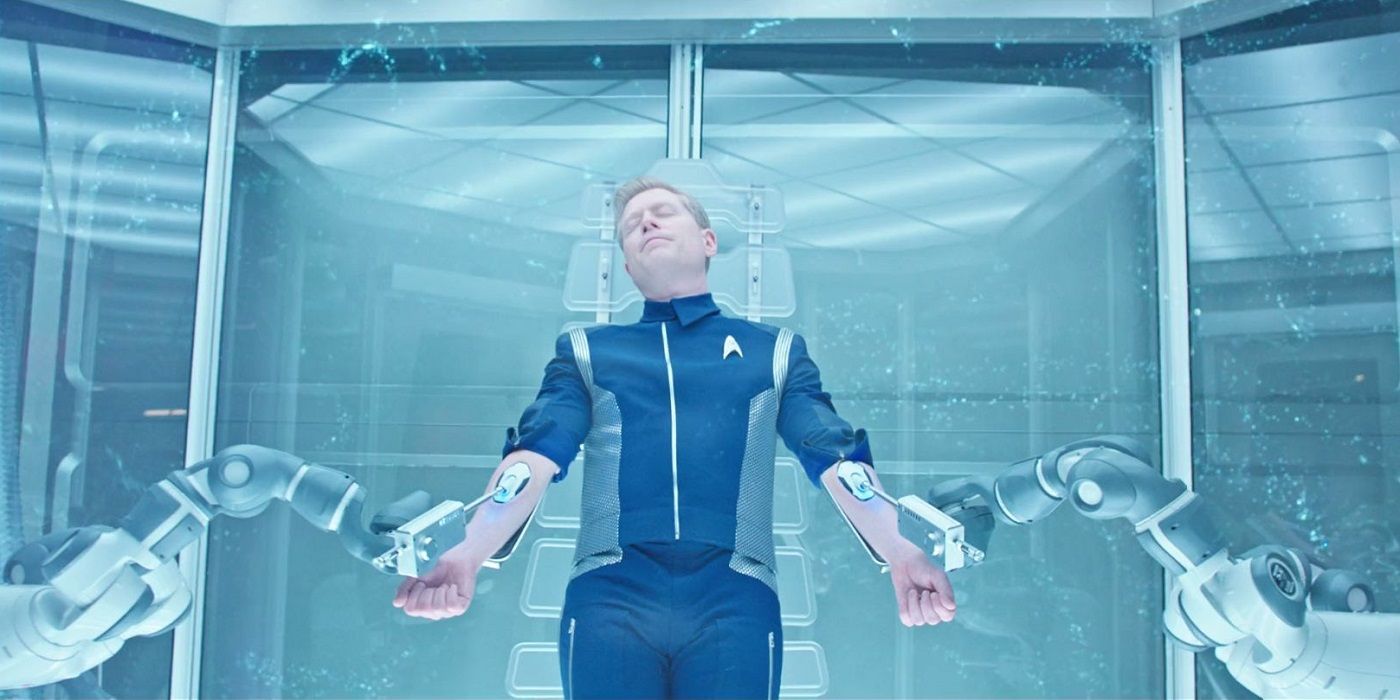
The central technological marvel of Star Trek: Discovery Season 1 was its spore drive, developed by astromycologist Paul Stamets and his partner. It essentially allows Discovery to teleport via a strange subspace realm called the mycelial network, eliminating transit times and giving the captain the ability to strike anywhere at any time. From a strategic perspective, it’s absolutely game changing. A fleet of Federation ships equipped with such technology could be all but unstoppable, yet only Discovery and its sister ship, the Glenn, ever used the spore drives, but why?
The obvious answer is that Discovery took place before the events of the original series, and the writers didn't conceive of the spore drive until well after it and the previous Star Trek shows aired. However, Discovery took great pains to set up the spore drive with a number of canonical conditions, which made wide scale use undesirable and dangerous.
Stamets himself is vital in using the drive, to the point where it couldn’t run without him. He and his partner, Straal, designed the drive, and Straal was killed in Season 1, Episode 3, "Context Is for Kings," making Stamets the only expert on the technology. Besides the raw knowledge required, the spore drive depended on one of two factors, neither of which was palatable to Starfleet. Initially, it required a creature called Ripper -- an alien that lived in symbiosis with the spores. Connecting Ripper to the spore drive caused it great pain, and Michael Burnham freed it upon learning of its suffering.
Stamets eventually took Ripper’s place by injecting himself with its DNA. That allowed him to use the drive, but it resulted in drastic and nearly fatal side effects. He recovered with help from his shipmates, and cybernetic implants stabilized his condition, but as with Ripper, the toll exacted on him was a violation of Starfleet ethics. When Discovery vanished at the end of Season 2, Spock recommended erasing all records of the spore drive’s existence, thus preventing any further suffering.

Not only does that explain why the technology vanished with Discovery, but it also keeps with the Federation’s activities during that period. Reckless experimentation was distressingly common in the original series era, and the most notable example was Khan Noonien Singh, who demonstrated the abject danger of the kind of genetic tempering required to run the drive. In turn, he seized another piece of experimental technology – the Genesis Device – and transformed something intended to feed the hungry into a genocidal weapon. That echoes Stamets’ peaceful intentions for the technology, which Starfleet twisted into a weapon of war.
Numerous episodes of the original series revealed ostensibly benevolent technology running amok. That includes cloned androids in Season 1, Episode 7, "What Are Little Girls Made Of," the probe Nomad in Season 2, Episode 3, "The Changeling" and a high-end computer system taking control of the Enterprise in Season 2, Episode 24, "The Ultimate Computer." Discovery itself also delivered a malevolent AI of its own in Season 2, which directly let to the ship's journey to the 32nd century. The spore drive fit in with this era of Federation history and with the subsequent understanding that some scientific endeavors are too dangerous to pursue.
The writers on the original series took inspiration from Frankenstein in their stories of well-intentioned Federation technology going out of control. Discovery adopted similar themes with the spore drive, using it to induce serious moral questioning in its characters. Regardless, the Federation's moral code forbade the combination of physical torment and genetic tampering required for the drive to work. Considering Starfleet’s other in-canon technological missteps during the era, it’s no stretch to assume that it, and the other monsters they created, were shut down well before Star Trek: The Next Generation began.
0 Comments